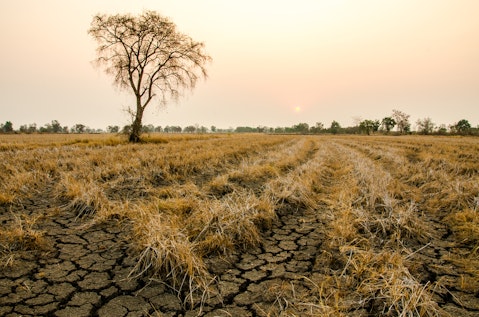In this article, we will discuss the 25 most humid countries in the world. If you want to skip our discussion on the impact of climate change on economies, you can go directly to the 5 Most Humid Countries in the World.
Humidity is a significant factor influencing the health and lifestyle of individuals and plays a crucial role in shaping climates worldwide. According to IOP Science, high humidity poses various socioeconomic challenges, especially in urban areas, impacting outdoor work conditions and public health. These studies emphasize the severe consequences of humid heat stress, particularly in densely populated urban settings. It’s projected that by the year 2100, a substantial 85% of the global population will reside in urban areas, underlining the critical need to comprehend and address the implications of high humidity within urban environments. Urbanization significantly contributes to local warming due to the extensive use of heat-absorbing materials like concrete and asphalt and the removal of vegetation that helps cool down the region.
The impact of increased humid heat can be directly related to the loss of labor globally. Increased warming and humidity in a region can cause health problems, decreased educational outputs, and an economic downturn. Outdoor workers such as farmers, construction workers, or fishermen are more likely to be exposed to high, humid heat, leading to decreased performance and productivity. This loss is categorized as labor loss and is calculated in hours per year. According to the Lancet Countdown on Health and Climate Change, heat exposure has already led to a labor loss of 200 billion hours annually for workers heavily involved in agriculture and construction. This labor loss can be translated to a GDP loss of $311 billion. This is a serious indication of how the increased global warming and humidity jeopardize the livelihoods and future of workers in the labor-intensive sectors. In contrast, countries that have the best weather in the world, such as those with consistently mild climates, may experience fewer challenges related to extreme heat. The highest labor losses are experienced in the low and mid-latitude regions, with India, China, and Indonesia witnessing the most enormous labor losses. The South Asian region is most susceptible to significant labor losses, with India accounting for almost half of the global labor loss, translating to 62 million jobs per year. It is also important to note that the most humid places in the world are in Asia near the equator.
Hot and humid countries remain vulnerable to socioeconomic decline unless swift actions are taken to mitigate local and global warming. Several prominent companies, such as West Fraser Timber Co. Ltd. (NYSE:WFG), NextEra Energy, Inc. (NYSE:NEE), and Enphase Energy, Inc. (NASDAQ:ENPH), have engaged in initiatives aimed at diminishing overall atmospheric emissions. Their efforts include planting trees and transitioning from fossil fuel-based energy to electrical and solar power. These strategies are intended to preserve nonrenewable energy sources and safeguard the environment to prevent further heating up of the environment.
Here’s what Carillon Tower Advisers said about Enphase Energy, Inc. (NASDAQ: ENPH) in its Q2 2023 investor letter:
“Enphase Energy provides solar microinverters and energy storage solutions. The company’s shares lagged benchmark counterparts amid concerns surrounding a near-term moderation in the growth of residential solar installation in the United States. Despite this, the company possesses a market-leading position in its core microinverter product and remains wellpositioned over the long term to benefit from ongoing solar adoption trends. Additionally, Enphase is focused on growing its international presence while also unveiling new products that could provide the next tailwind to its growth story.”

Sawat Banyenngam/Shutterstock.com
Our Methodology
We used reputable sources such as UN Data and Climate Data to shortlist the 25 most humid countries in the world. These countries have been arranged in ascending order of their mean relative humidity rate. Relative humidity indicates the amount of moisture in the air in a particular region relative to the maximum moisture it could hold.
Most Humid Countries In The World
25. Nicaragua
Average Annual Relative Humidity: 68%
Nicaragua, particularly along its coastal regions, experiences significant humidity due to the country’s tropical climate and the influence of the Pacific Ocean and the Caribbean Sea.
24. Libya
Average Annual Relative Humidity: 70%
Libya is located in the subtropics of the Northern Hemisphere and has a desert climate. The presence of the Mediterranean Sea moderates this hot and arid climate. The dry weather dominates the summers while the region receives cyclonic storms and heavy rains from October to March, leading to a humid climate.
23. Honduras
Average Annual Relative Humidity: 70%
Honduras is in the tropical zone with warm summers and a long rainy season from June to October. The country remains warm all year long, and the rain spell causes an increase in the humidity.
22. Guinea
Average Annual Relative Humidity: 72%
The climate of Guinea can be defined as a tropical savanna climate. It remains hot throughout the year with dry and wet seasons. The average annual temperature in the country is 30° Celsius.
21. Ecuador
Average Annual Relative Humidity: 75%
Ecuador is located near the equator in South America. Due to its position on the equator, the country remains uniformly hot all year. Only the Antarctic Humboldt Current provides some relief from July onwards with a decrease in temperature and humidity.
20. Sri Lanka
Average Annual Relative Humidity: 75%
Sri Lanka has a tropical climate. It is located near the equator, leading to a humid environment. With high humidity and hot temperatures, Sri Lanka receives most of its rainfall between October and November. The weather remains pleasant in the winter months, from January to March.
19. Vietnam
Average Annual Relative Humidity: 77%
Vietnam has a tropical savanna climate, highly influenced by monsoon. The entire country experiences monsoonal patterns throughout the year. The northern and southern regions receive heavy rainfall from May to October, while the rest of the country receives rainfall between September to January.
18. Nigeria
Average Annual Relative Humidity: 77%
Nigeria is located in West Africa and has varying climate zones ranging from rainforests to savannas. It remains primarily warm throughout the year, with a few tropical sticky months. Nigeria receives most of its rainfall from June to October.
17. Sierra Leone
Average Annual Relative Humidity: 77%
The local climate of Sierra Leone is tropical, with the coastal areas experiencing a hot and humid climate. The average temperature varies between 29 to 30 degrees Celsius.
16. Ghana
Average Annual Relative Humidity: 78%
Ghana is situated in West Africa and has a tropical climate. It is mainly characterized by wet and dry seasons. The wet season, with heavy rainfall, spans half the year from April to October. During this time, Ghana experiences higher humidity in the central and southern parts of the country.
15. Côte d’Ivoire (Ivory Coast)
Average Annual Relative Humidity: 78%
Côte d’Ivoire has a tropical climate and experiences hot temperatures throughout the year. The average temperature in the country varies from 25 to 30 degrees Celsius. The country’s equatorial climate leads to higher humidity that helps sustain lush rainforests and diverse ecosystems.
14. Thailand
Average Annual Relative Humidity: 78%
Thailand has a tropical climate characterized by three different seasons. It experiences high temperatures from March to June, which leads to the rainy season starting from July to October. This is the wet season, which is followed by the cool winters from November to February.
13. Bangladesh
Average Annual Relative Humidity: 80%
Bangladesh has a subtropical monsoon climate distributed into three seasons. The country experiences high humidity levels, especially in the monsoon season from June to September. The coastal regions often experience higher humidity owing to their closeness to the Bay of Bengal.
12. Papua New Guinea
Average Annual Relative Humidity: 80%
Papua New Guinea has a tropical climate due to being close to the equator and experiencing high temperatures throughout the year with high humidity. The coastal areas and lowlands in the country are hotter and more humid than the highlands. The climate supports lush rainforests in the country.
11. Indonesia
Average Annual Relative Humidity: 80%
Indonesia has a varied climate, primarily characterized as tropical. Since the country is located on the equator, it experiences a hot and humid climate all year long. The rainy season spans from October to March but does very little to offset the high humidity in the region. The country is at the eleventh position on our list of the 25 most humid countries in the world.
10. Myanmar
Average Annual Relative Humidity: 80%
Myanmar is spread across two climate zones: the tropics and subtropics. Northern Myanmar is in the subtropics, while Southern Myanmar is in the tropics. This leads to a hot climate throughout the year with very little rainfall. The humidity remains relatively high throughout the year, with a slight dip between February and April.
9. Liberia
Average Annual Relative Humidity: 80%
Liberia has an equatorial climate and experiences rainfall throughout the year, which contributes to the high level of humidity in the country. The northern regions are tropical and influenced mainly by the West African monsoon. The country receives most of its rainfall between May and November.
8. Brunei
Average Annual Relative Humidity: 80%
Brunei has an equatorial climate with high humidity, temperatures, and rainfall throughout the year. The average annual temperature is 30 degrees Celsius, with only a month of dry season. The humidity remains high due to Brunei’s proximity to the ocean and the dense rainforests in the country.
7. Equatorial Guinea
Average Annual Relative Humidity: 80%
Equatorial Guinea has a tropical climate characterized by high temperatures, humidity, and excessive rainfall that supports its lush green natural landscapes and rainforests. The country experiences warm weather throughout the year, with coastal areas experiencing higher humidity. Equatorial Guinea experiences two wet seasons in a year. The country has secured seventh place among the 25 most humid countries in the world.
6. Columbia
Average Annual Relative Humidity: 81%
Colombia has a tropical and isothermal climate, which means that weather remains almost the same throughout the year with minimal variation in temperature or humidity. Owing to its proximity to the equator, Colombia experiences high humidity in the coastal areas and lowlands. The highlands are much cooler with lower humidity levels.
In the context of climate and environmental considerations, several prominent companies, such as West Fraser Timber Co. Ltd. (NYSE:WFG), NextEra Energy, Inc. (NYSE:NEE), and Enphase Energy, Inc. (NASDAQ:ENPH), have engaged in initiatives aimed at addressing the impact of climate change.
Click to continue reading and see the 5 Most Humid Countries In The World.
Suggested articles:
- 30 Countries with the Best Economy in the World Right Now
- Ken Griffin Stock Portfolio: Top 10 Stock Picks
- 16 Most Profitable Penny Stocks Now
Disclosure: None. 25 Most Humid Countries In The World is originally published on Insider Monkey.




